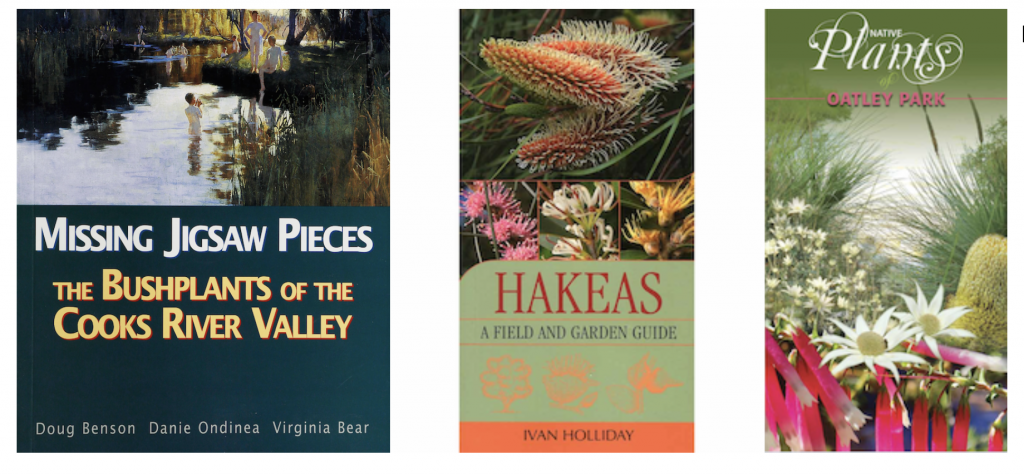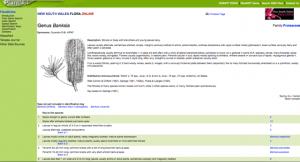The following report is based on Rhonda’s talk to APS Sutherland Group in June 2022, and first appeared in the APS Sutherland Group July 2022 newsletter.
Why bother with names?
Botanical names may seem foreign at first encounter, but they are useful. We have developed a naming system for plants to help us communicate with others, share and build knowledge, and understand relationships and linkages. But remember, the plants don’t know they have to fit into our system.
Getting started
There are now many resources available to help identify native plants. People learn in different ways, so find a resource or approach that works for you. It also depends on your starting point of knowledge, such as the botanical hierarchy (families, genera and species) and the botanical features of plants.
Two key questions: Where and what
Plant identification does require careful observation. Two key questions to consider when you see a plant you want to identify are:
Where is the plant? Is it in a natural area or planted? Is it likely a native species, cultivar or weed? Consider the hierarchy of spatial location and scale from the state, region, geology, habitat or ecosystem, and the specific site and aspect.
What are you looking at? This includes the overall type and size of plant (from tree to groundcover), and also the parts of the plant (are you looking at the leaf only, or the bud or flower or fruit). Look around the plant for more examples.
Keep in mind
- Know the distinguishing features and simple botanical terms. Most genera have specific features to focus on for ID, such as the shape of the woody fruit for Hakea species.
- Use an ID key or visually match against a reference book.
- Narrow down the options, then check.
- Be flexible, and remember we don’t know everything, and resources can be incomplete or wrong.
- Understanding the origin of plant names can help, as many names refer to characteristics of the species. A plant with tiny leaves is more likely to be X. microphylla than macrophylla (= big leaves), big flowers or fruit may be X. macroflora or macrocarpa, and red flowers may be X. rubiflora (= red flowers).
The easiest way to ID a plant is someone tells you what it is. If this is while on a bush walk, it can take time. You just then need to remember the name, by writing it down or taking a photo. If you ask someone about a plant later, provide information about the location, and photos of the plant parts.
Resources – Books
There are many books about plants and they all have different purposes. Books for identification tend to be either location-specific or genus-specific. For our area in Sydney, two useful books which both have about 1400 species and are in their third editions are:


Les Robinson’s Field Guide to the Native Plants of Sydney (2003). This has maps of habitats, keys for ID, families, groups of plants (ferns, rainforest, coastal, aquatics, climbers) and a glossary. For each species, there is a description, black and white drawings, the likely location (such as sandstone or Cumberland, heath or open woodland), and the origin of the name.
Alan Fairley and Philip Moore’s Native Plants of the Sydney Region (2010). Similar content, but this has a colour photo rather than a drawing for each plant.
Some location-specific books are tightly focused on a small area such as Native Plants of Oatley Park from Oatley Flora and Fauna Society, or Missing Jigsaw Pieces – The Bushplants of the Cooks River Valley.
Genus-specific books focus on a specific genus of plants such as acacias, banksias, eucalypts or hakeas, or a group of similar plants such as rainforest or orchids. For instance, Banksias (2020, 2nd edition) by Kevin Collins, Kathy Collins and Alex George has every Banksia species in Australia. There are also books on specific groups of plants that are very location-specific such as Sutherland Group’s very own Margaret Bradhurst’s Native Orchids of Southern Sydney.

Resources – Online and digital
There is a growing range of online and digital resources, and many are free.

Websites: PlantNET website, from the NSW Herbarium, allows a range of searches by location and name (genus or species), and has genus identification keys. See also the Australian Virtual Herbarium website.
APS NSW website (www.austplants.com.au) with a plant profile database, and plant lists by region.
Free app: Plants of South Eastern NSW by Betty Wood with 3,000 species.
Specialist apps: WATTLE app for Acacia ($9.99), EUCLID for Eucalyptus ($19.99) and Rainforest Plants of Australia app ($49.99).
CD-Rom: Coastal Plants of Royal National Park CD-Rom from APS Sutherland Group, with over 300 species.
Social media: APS NSW is on Facebook, Instagram and YouTube, and there is a Members Forum Facebook Group. There are also non-APS Facebook groups such as NSW Native Plant Identification, and Growing Illawarra Natives.
Be creative in Google searches. Type in text descriptions such as “big yellow flower with red centre, “pink bottlebrush”, “street trees in X area” or ‘plectranthus in Lennox Head”.
In summary
The key tips are to be observant, ask where and what, use resources that suit you, take photos and/or write down names, and remember it takes time to learn and remember through exposure and repetition.
More information
Tips on identifying plants on the APS NSW website here
Demystifying plant names article here and video of my May 2020 talk on YouTube here.
Rhonda Daniels, Sutherland Group
